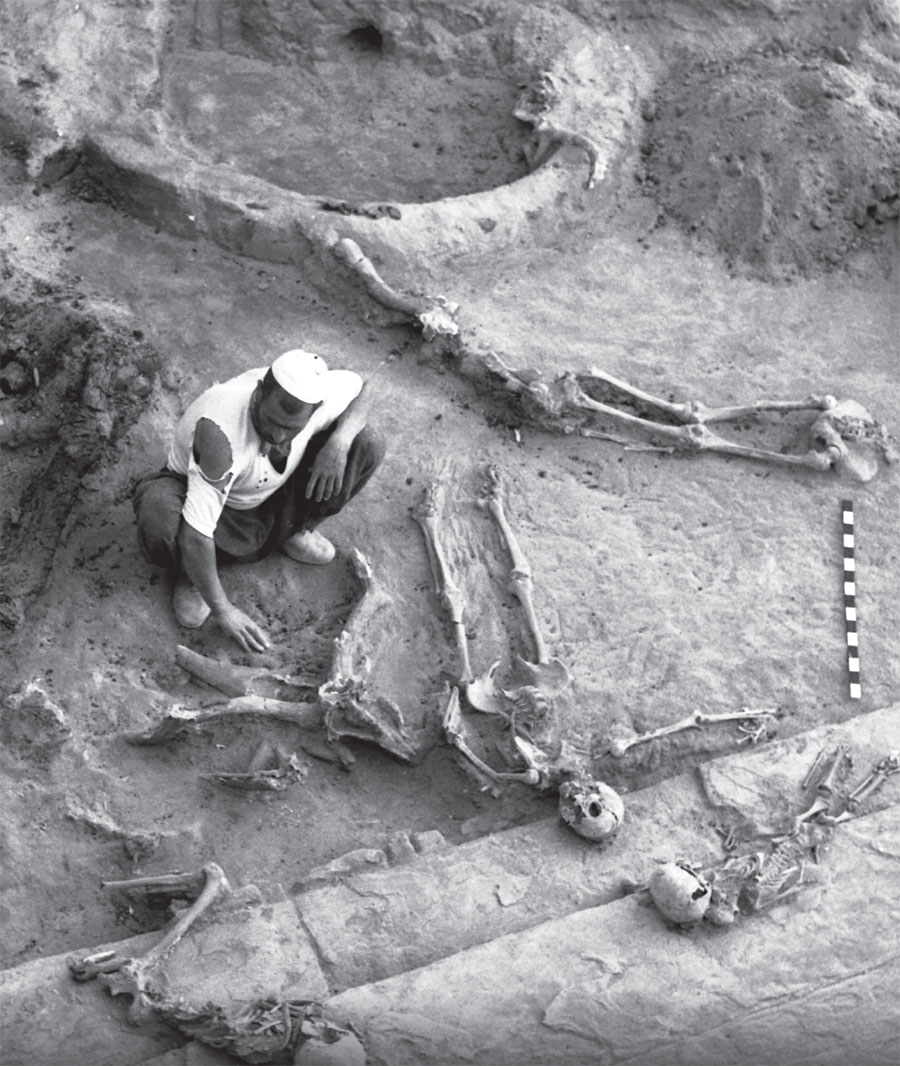
In the summer of 1958, a young archaeologist by the name of Robert H. Dyson, Jr., led a team from the Penn Museum to the site of Hasanlu in northwest Iran. Stratigraphic soundings dug two years earlier had yielded interesting pottery and the site seemed like a worthwhile place to explore the cultural history of the region. The archaeologists were completely unprepared for what they would find.
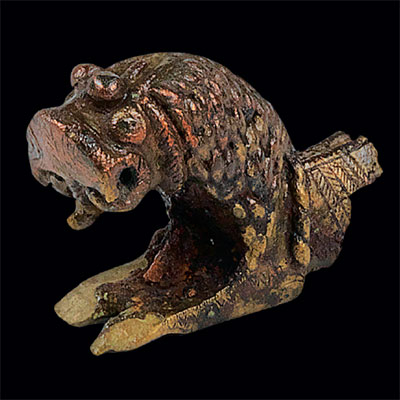
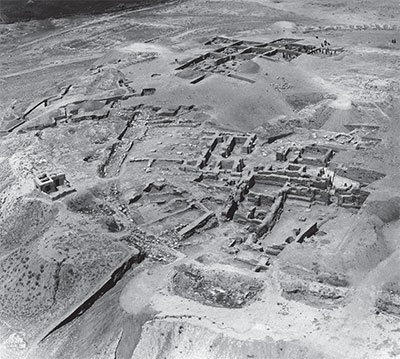
The Hasanlu Mound
Aerial photograph showing the wide horizontal exposure on the southern part of the mound after several seasons of excavation. Here, the archaeologists uncovered the burned remains of monumental buildings with large columned halls dating to the early Iron Age (1200–800 BCE). These were identified as elite residences and public buildings including a temple. PM image 76256.
Hasanlu Tepe is situated in the Qadar (or Gadar) River valley, south of Lake Urmia in northwest Iran. Formed over several millennia of occupation, the citadel mound rose 25 meters (82 feet) above the plain and was surrounded by a 33 hectare (82 acre) lower town. During the first field season, the team of archaeologists from the Penn Museum initiated large-scale excavations at the site in order to reconstruct the history of the region based on stratified occupation levels, rather than on literary evidence from adjoining regions. With this goal in mind, several operations were laid out on the citadel mound and in the lower town. The excavators did not have to dig very deep before they uncovered the burnt remains of massive mudbrick walls. Further excavation quickly uncovered thick layers of ash, hundreds of broken vessels, scores of human skeletons, and then treasure. A few weeks into the excavation, according to a letter written by Bob Dyson to Penn Museum Director Froelich Rainey, one of the workers picked a silver cup with electrumapplied decoration out of the ash, “held it up with a slight grin, and said ‘Good?’”
Ten days later, Dyson was excavating a skeleton when his brush revealed a flash of gold, giving him a first glimpse of the famous Gold Bowl of Hasanlu. These unexpected discoveries led to the project shifting its focus to the Iron Age history of the site, revealing an extensive destruction layer—evidence of the city’s sacking and burning at the hands of an as yet unidentified enemy. The nature of this destruction was such that the city was essentially frozen in time, providing researchers with extraordinarily well-preserved buildings, artifacts, and the skeletal remains of the victims and enemy combatants who fell on that fateful day, making the site a veritable Pompeii of the early Iron Age Near East.
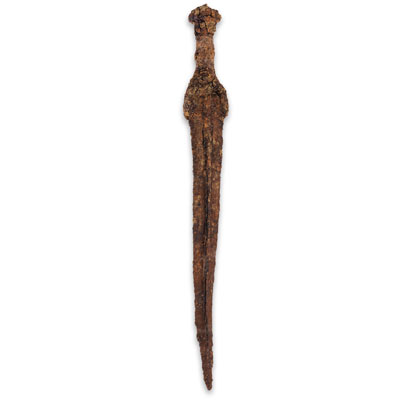
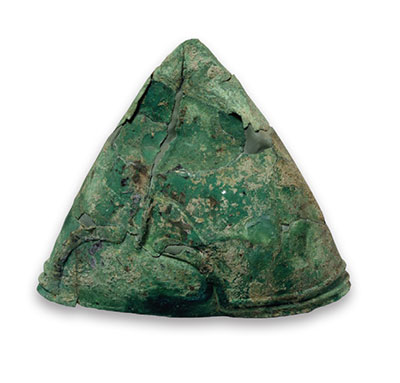
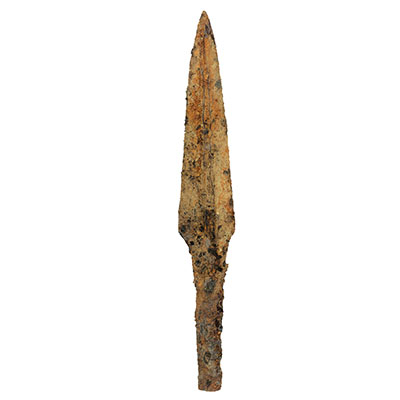
A Vicious Attack on the City
Hasanlu was inhabited fairly continuously from the 6th millennium BCE to the 3rd century CE. By the early 1st millennium BCE, the settlement included a large lower town and a fortified citadel of more than three hectares (about 7.4 acres) that housed a number of elite buildings including palaces, temples, and arsenals. At the end of the 9th century BCE, the city was subjected to a violent attack culminating in an ultimately catastrophic fire, during which the large buildings of the citadel collapsed. Amid the burned ruins of the city, approximately 250 skeletons of men, women, and children were found where they had been cut down in the attack and/or subsequently crushed by the falling masonry. Some of the victims were found in clusters, with head wounds and disarticulated limbs, suggesting that mass executions may have taken place. The excavators also found upwards of 7,000 objects in situ, including weapons and armor, horse trappings, metal and ceramic vessels, jewelry, and cylinder seals. A vast quantity of sumptuous material, including artifacts of gold, silver, and ivory, was recovered from the debris, indicating that the flames must have spread rapidly through the city. A quickly moving fire would have prevented the attackers from carrying off much of its treasure.
A road on the western side of the high mound gave access to the citadel. There the archaeologists investigated a possible arsenal and a large residential structure. Excavations on the southern part of the mound revealed a cluster of elite buildings organized around a stone-paved courtyard. Although the tall columned buildings of the citadel were made of mudbrick on stone foundations, the wooden columns, doorjambs, rafters, and roofing, as well as the reed mats covering the floor, would have caught fire in an instant. The largest of these, called Burned Building II, likely served as a temple. Here, the excavators found more than 50 skeletons lying clustered near the main doorway. The fire must have spread quickly, engulfing the temple shortly after the raiders entered intent on stripping the treasury of its precious contents. Residents gathered there may have fought to save their gods. In an instant, the weakened structure collapsed, trapping and crushing everyone and everything in their place, thus allowing archaeologists to reconstruct the architecture of the temple, how it was furnished and used in daily life, as well as how this tragic scenario played out in its final moments.
Burned Building II consisted of an outer sanctuary in the form of a long columned hall flanked by storerooms leading to a small inner sanctuary or cella, a plan most closely related to the temples of northern Mesopotamia. Three plain stone stelae were erected at the building’s main entrance as monumental or religiously significant decoration. A built-in offering table and platform were set up outside the cella for cultic use. Nearby, the archaeologists found a pair of large eye-shaped ivory inlays alongside a group of six skeletons. These were interpreted as the remains of a large cult statue representing the deity who resided in the temple; the six individuals may have been residents who perished while attempting to carry their god to safety. In front of the entrance to the cella, the charred remains of two wooden thrones with copper attachments were discovered with a tall iron lamp with tripod feet. The gods may have sat on these, to receive the offerings set before their cella and to enjoy the incense emanating from the lamp.
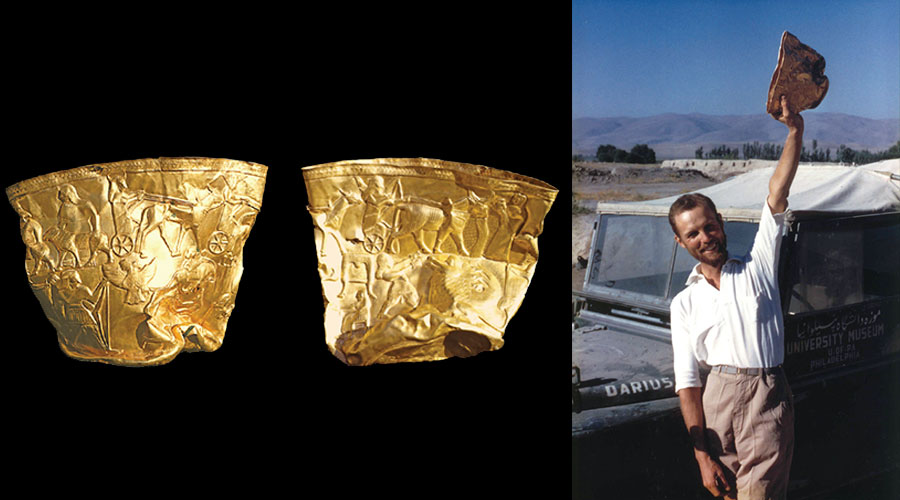
The Discovery of a Lifetime
Bob Dyson describes the discovery of the famous Hasanlu gold bowl in Life Magazine (January 12, 1959, p. 60): “Thinking it was a bracelet, I brushed some more. Our eyes got bigger and bigger as the sliver became a strip, and then a sheet, and then a golden bowl. Lifting it gently from the arm bones, I stuck it inside my shirt and went over to where our secretary, Caroline Dosker, was giving the workmen their day’s pay. Pulling out the vessel, I held it high: ‘Here it is, men—the discovery of a lifetime!’ As the gold glowed in the sunset, the group stared in disbelief. We nicknamed it Baby.” PM image 148612. above: Both sides of the Hasanlu gold bowl. From the Musée Iran Bastan, Tehran (No. 15712). Courtesy of the Hasanlu Project, Near East Section, Penn Museum.
What was left of a drum decorated with bone plaques was found in situ in the outer sanctuary; the boom of the drum would have punctuated the liturgies and rituals performed for the gods. The bodies of 55 adults and young children were found together near the main doorway of the outer sanctuary. Many of the crushed skeletons wore jewelry and were likely female; a smaller number wore helmets and carried weapons and may have been soldiers who also died when the building collapsed. Nearly half of the individuals found here wore a distinctive type of garment pin, featuring an oversized iron shank topped with the cast bronze figure of a recumbent lion. These lion pins are unique to Hasanlu and were probably associated with high rank, military power, and local identity. Many in the group appear to have been carrying small objects when they were crushed in the collapse of the burning building; possibly they were trying to salvage the temple’s treasures.
The storerooms lining the outer sanctuary contained cultic furnishings and other commodities, including large pithoi and pots for storing foodstuffs, and tens of thousands of stone beads and necklaces. However, the distribution and quality of many of the objects recovered from layers of building collapse indicate that the temple treasury was located on a second floor. Among these objects were a variety of heirlooms and valuable imports, including large quantities of glazed wall tile, ivory inlaid furniture, imported ivory boxes, glass, metal vessels, wood and ivory statuettes, and weapons.
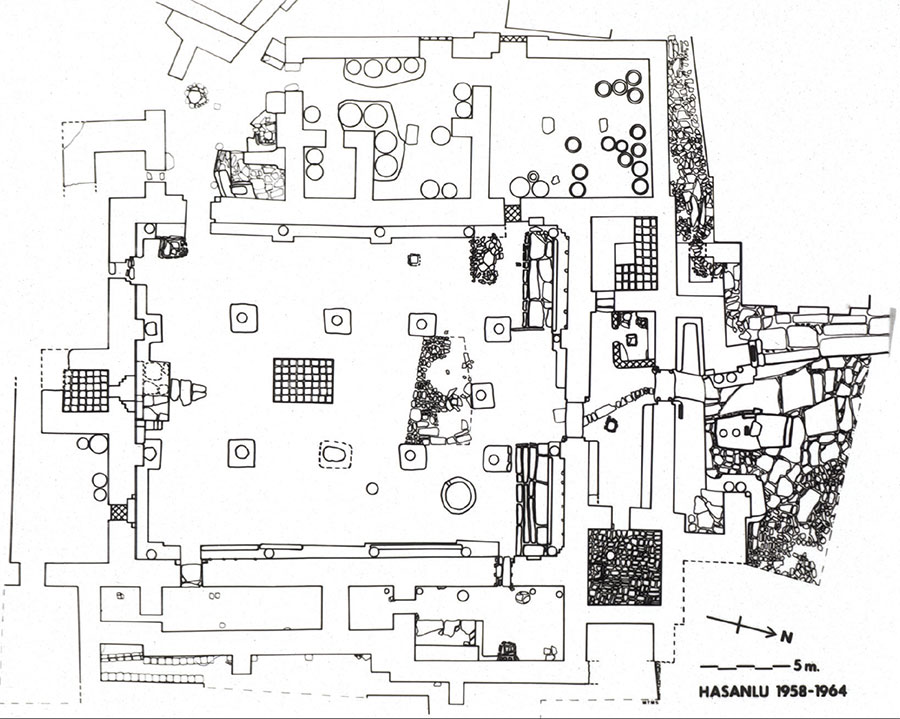
Burned Buildings
Plan of Burned Building II. PM image 304666. The columned-hall structure of the building is typical of the monumental architecture of western Iran in the Iron Age, while the overall plan is most similar to northern Mesopotamian temples, with a straight access approach through a long outer sanctuary leading to a cella.
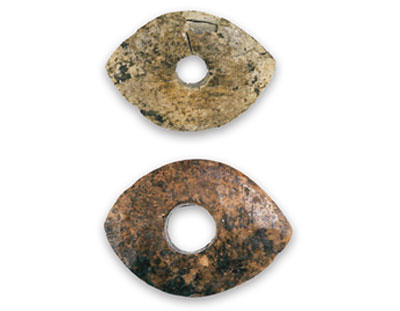
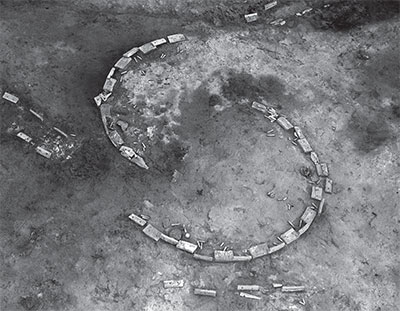
Hasanlu’s Regional Connections
The objects stored in the temple treasury attest to the city’s engagement with a wider international sphere. Many of the objects were locally made, while others had been imported from Assyria, northern Syria, or elsewhere in Iran. Some of the imported objects were already centuries old by the time they were stored in the temple. A few of these, inscribed with the names of rulers from neighboring kingdoms like Assyria, Babylonia, and Susa, may have arrived as diplomatic gifts, part of an age-old custom of kings presenting objects to one another to strengthen a political alliance.
Many of the luxury objects made locally at Hasanlu emulated the courtly arts of their Assyrian and Urartian neighbors, possibly in a conscious effort to convey something of those empires’ power and status. The local artisans may have been inspired by diplomatic gifts, rendering similar forms in a variety of different media and in a more local style. Some of the metalwork suggests Urartian influence, while popular Assyrian themes were incorporated into locally carved seals and ivories.
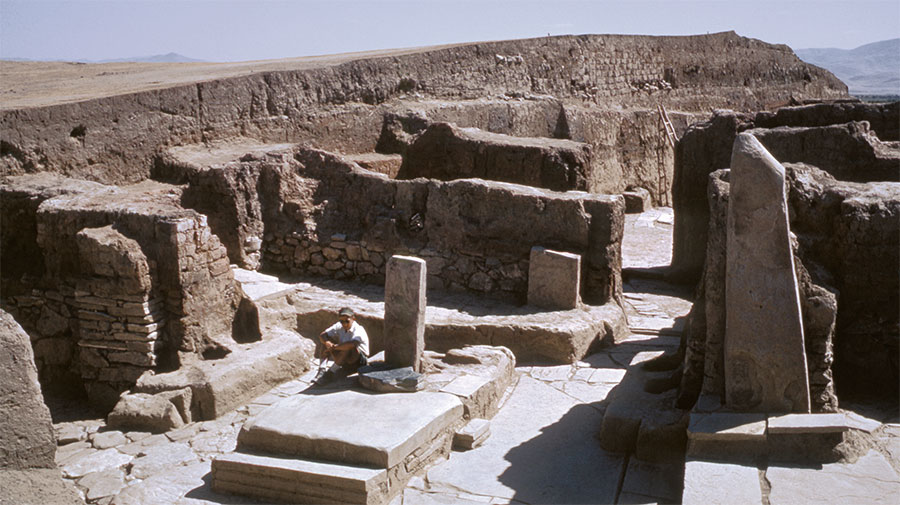
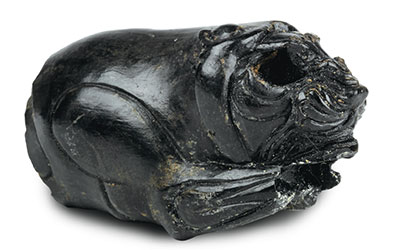
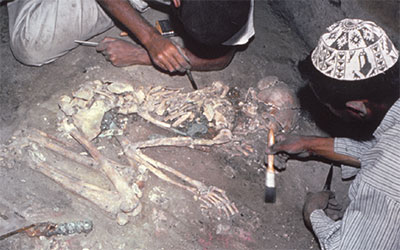
Who Attacked Hasanlu?
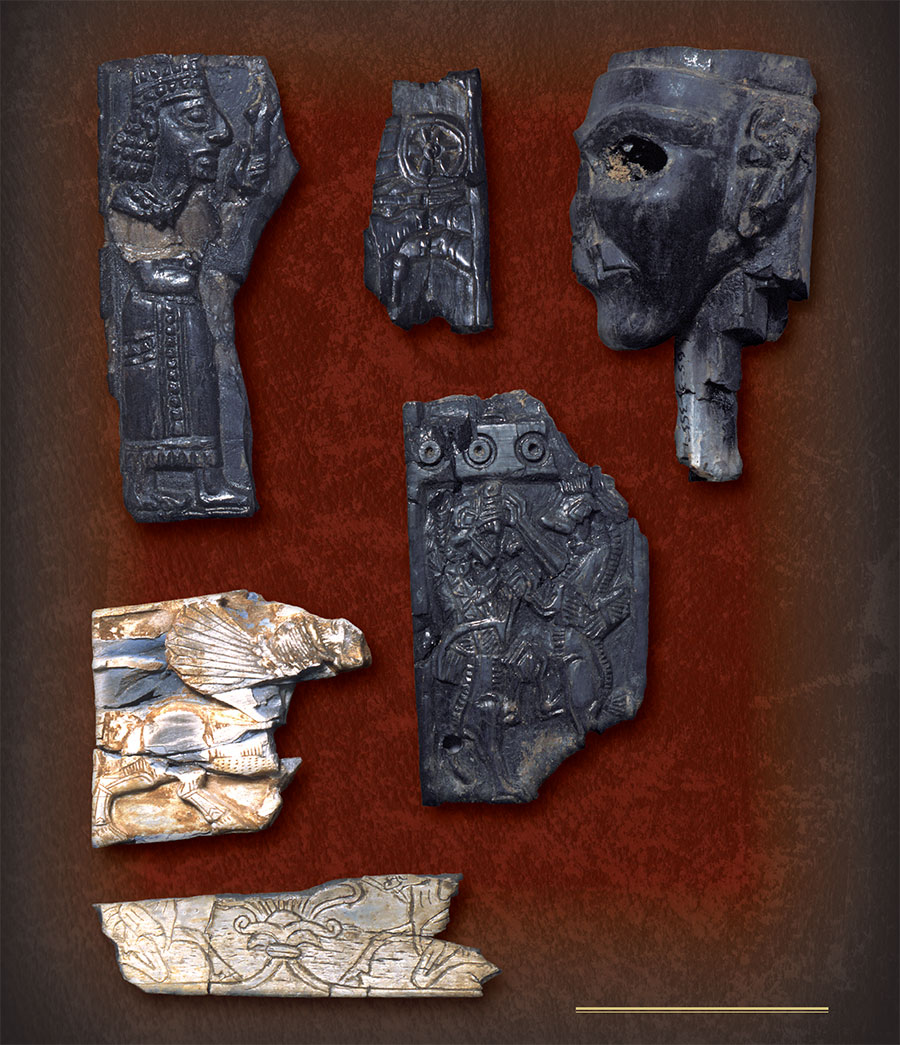
Burned Ivories
The burned buildings on the citadel of Hasanlu yielded a large number of carved ivory plaque fragments which once decorated wooden furniture. Some of the pieces were imported from Assyria, while others were locally made. Exposure to the fire that destroyed the city produced their blackened appearance. PM objects 65-31-351, 65-31-352, 65-31-334, 65-31-340, 65-31-364, 65-31-355
Although the events of the last day at Hasanlu have emerged with remarkable clarity, the identity of the attackers remains uncertain. The Neo-Assyrian Empire was beginning a period of renewed power and influence in the 9th century BCE, and it is also at this time that the kingdom of Urartu conquered nearby Armenia and parts of northwest Iran. The presence of significant quantities of Assyrian and Urartian goods and the locally made copies certainly attest to cultural contact at this time, and arguments have been made for both of these neighboring powers figuring as the city’s attackers. A recent study of the weaponry recovered has suggested that the invaders may have come instead from a lesser-known kingdom or group from the south Caucasus. The excavations at Hasanlu ended over 40 years ago, but research on the city and the circumstances of its destruction continues. Through the slow analysis of the existing remains and the excavation of other Iranian sites of this time period, we hope to gain new information that will someday allow us to definitively identify the perpetrators of Hasanlu’s destruction.
KATHERINE BURGE is a Ph.D. student in Art and Archaeology of the Mediterranean World at Penn.
LAUREN RISTVET, PH.D., is Dyson Associate Curator in the Penn Museum’s Near East Section.
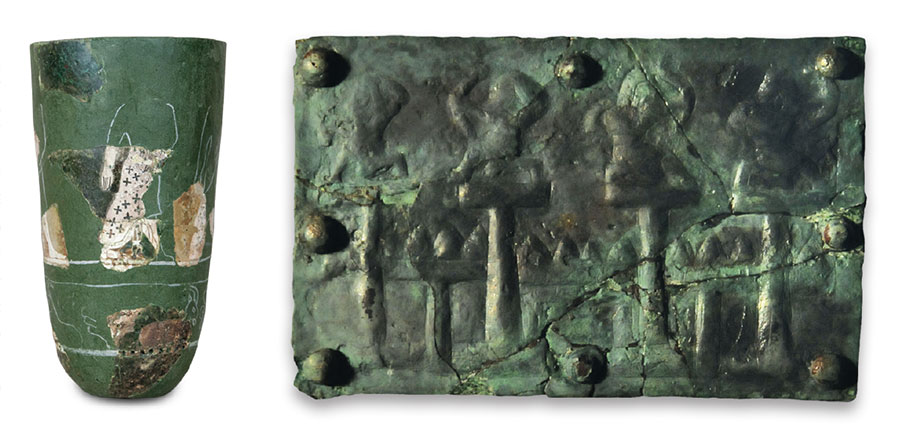
Influences from Abroad
LEFT: This mosaic glass goblet deco-rated in the Kassite style dates to the Late Bronze Age. It was imported from Babylonia, possibly as a diplomatic gift. PM object 65-31-403. RIGHT: A bronze repoussé plaque depicts a crenellated wall with archers perched atop four tow-ers. The style of the metalwork suggests Urartian influence. PM object 63-5-177.
